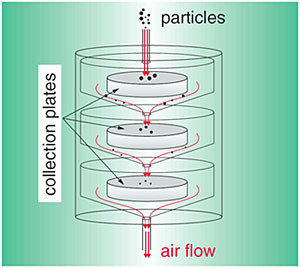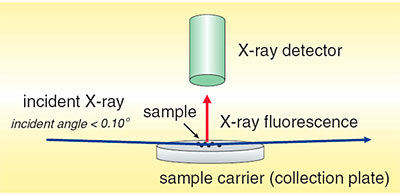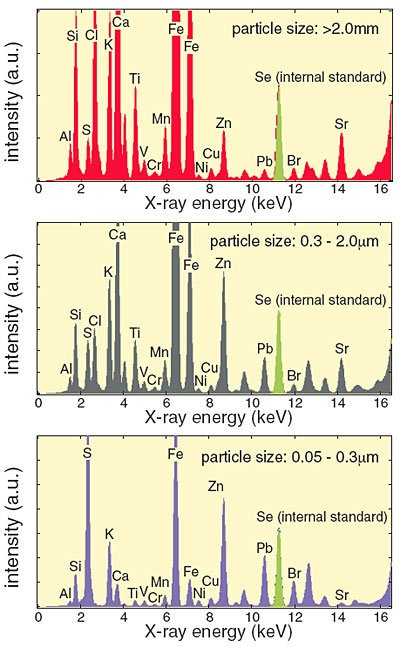Aerosol particles are composed of various elements. The particles often contain harmful heavy metals that can adversely affect the human body. In particular, particles less than a few micrometer in aerodynamic diameter are important because they can penetrate the gas-exchange tract of the alveoli. Therefore, the determination of the elemental composition of aerosol particles is of great importance to estimate health effects. In addition, the elemental composition gives valuable information on the origin of the particles. In this case, a simple, rapid, and sensitive analytical technique is required because particles continually change in size and elemental composition.
We have developed a method to measure the elemental composition of particles using the combination of direct particle collection by impaction and analysis with total-reflection X-ray fluorescence (TXRF) spectrometry.
The principle of the particle collection is shown in Fig. 9-1. The impactor is equipped with three impactor stages and the size-fractionated particles are collected on the collection plates. Here, we used sample carriers for TXRF as the impaction plates. In the TXRF analysis (Fig. 9-2), we modified the sample holders to use carriers with diameters of 25 mm. Silicon (Si) was used as the carrier material to provide a sensitive analysis. Fig. 9-3 shows the TXRF spectra of aerosol particles collected on the Si carriers for 48 hours. In the analysis, we use Se as an internal standard for quantification. As a consequence, elements with concentrations of pg levels could be measured. We found that Pb and Zn, which originate from anthropogenic sources, are mainly concentrated in fine particles. In contrast, the elements Ca, Ti, and Fe, which originate from geo-genic sources such as soil, are concentrated in coarse particles. This method is now applied on trial to the analysis of trace amounts of nuclear materials emitted from nuclear facilities.
|


